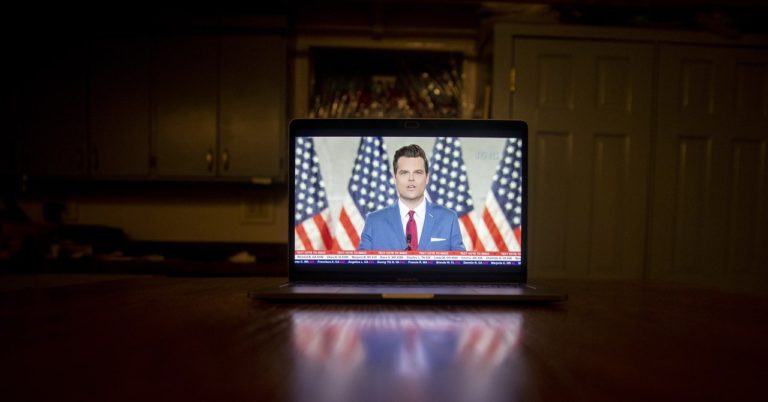
[ad_1]
At a hearing of the House Intelligence Committee in June 2019, experts warned of the democracy-distorting potential of videos generated by artificial intelligence, known as deepfakes. Chair Adam Schiff (D-California) played a clip spoofing Senator Elizabeth Warren (D-Massachusetts) and called on social media companies to take the threat seriously, because “after viral deepfakes have polluted the 2020 elections, by then it will be too late.” Danielle Citron, a law professor then at the University of Maryland, said “deepfake videos and audios could undermine the democratic process by tipping an election.”
The 2020 campaign is now history. There were upsets, but deepfakes didn’t contribute. “Not really, no,” says Giorgio Patrini, founder of deepfake-tracking startup Sensity. Angie Hayden, director of product at the AI Foundation, which is testing a deepfake detection tool with media organizations and nonprofits including the BBC, also reported a quiet campaign. “It’s nice when your tech saves the day, but it’s better when the day doesn’t need to be saved,” she says.
Plenty of disinformation swirled, and swirls still, around the recent vote, but the misleading videos that contributed appeared to be artisanal, not algorithmic. Fact-checkers found videos that had been deceptively described or edited with conventional tools, like a clip edited to make it look like Joe Biden had greeted Floridians as Minnesotans. An AI-generated profile photo was uncovered attached to a fake persona pushing a muddled and discredited smear against Biden’s son, but it played only a peripheral role in the stunt.
Twitter and Facebook added rules specific to deepfakes to their moderation policies in early 2020, but neither appears to have used them. A Twitter blog post last week rounding up its election efforts said it had added labels warning of misleading content to 300,000 tweets since October 27, which was 0.2 percent of all election-related posts in that period. It didn’t mention deepfakes, and a company spokesperson said he had “nothing specific” on the topic. Facebook didn’t respond to a request for comment.
Two deepfake video campaigns that did try to persuade US voters did so openly, as efforts to warn of the technology’s potential.
Phil Ehr, a Democratic House candidate in the Florida panhandle, released a campaign ad featuring a deepfake version of his opponent, incumbent Republican Matt Gaetz, saying uncharacteristic phrases such as “Fox News sucks” and “Obama is way cooler than me.” Ehr’s own face—apparently fully human—breaks in to deliver a PSA on deepfakes and nation-state-backed disinformation. “If our campaign can make a video like this, imagine what Putin is doing right now,” he says.
Campaign adviser Keith Presley says Ehr, a Navy veteran who had worked on electronic warfare, wanted to prod Gaetz to engage on the topic of disinformation, which Ehr believed Gaetz had downplayed. The campaign got in touch with RosebudAI, a startup that uses deepfake technology to make images and video for fashion shoots and online commerce. Presley says the campaign designed the 60-second spot to minimize the chance it could be maliciously repurposed, showing the algorithmic Gaetz only on a TV in voters’ living rooms, not full screen, and including giveaway glitches. Gaetz’s office did not respond to a request for comment.
Despite his sophisticated ad, Ehr lost badly. Presley says although no malicious deepfakes appeared during the campaign, it’s still important to educate people. He pointed to a paradox of watching for the fruits of technology claimed to be capable of seamlessly mimicking reality: “How would anybody know?”
[ad_2]
Source link
